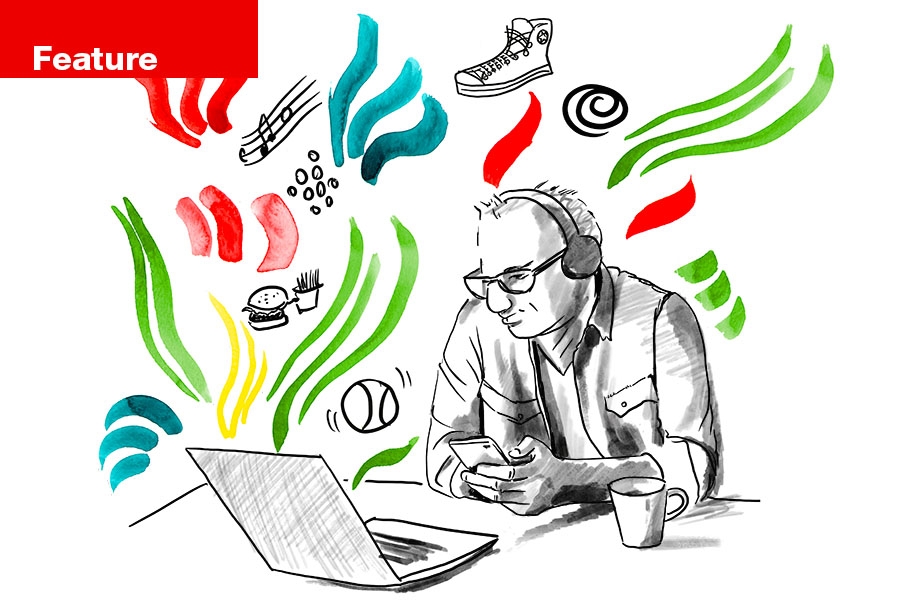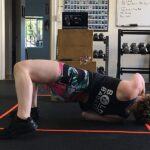A surge in people spending more time online and a new era of social messaging by brands have reshaped the world of advertising.
In the beginning of the pandemic, there was a real nervousness,” says Keely York, president and chief operations officer of Portland digital advertising agency Thesis. “A lot of our clients were looking to make cuts, and often the first place to cut back is on advertising budget.”
But the nerves were short-lived.
While some brands scaled back at the outset of COVID-19, it quickly became clear that online advertising had become more effective than ever before. Whether it was to check news, order products or connect with loved ones on social media, digital advertising became the first, best and only way for brands to make themselves known to potential customers.
Digital marketing experienced double-digit growth in 2019 before the COVID-19 pandemic. But, like other digitally driven industries during lockdown, growth quickly accelerated. Consumers’ rush to the screen has ushered in a new era for advertising.
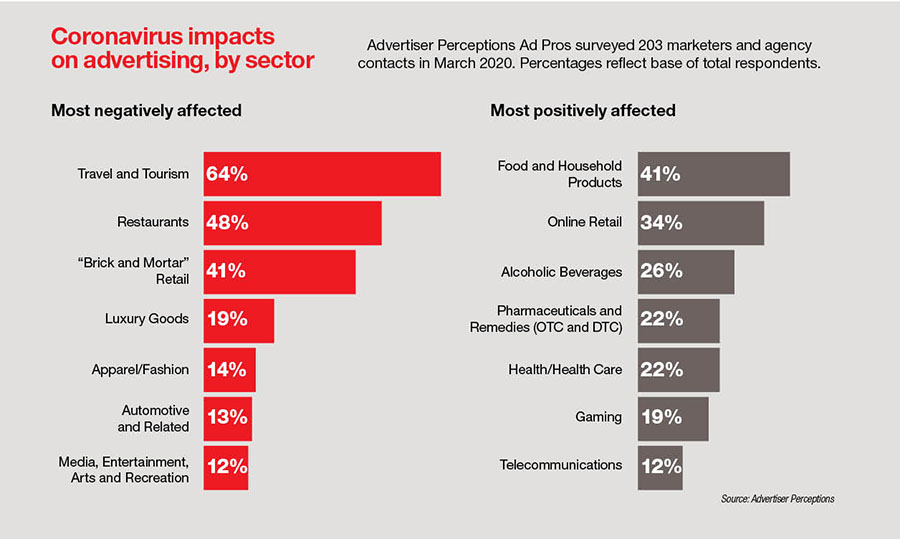
As brands adjust their business models to succeed in a world of e-commerce, advertising efficiently on search engines, streaming services and social media platforms is vital to small brands getting started.
The uncertainty brought on by the pandemic, as well as the frantic 2020 news cycle, has made consumers expect more conscientious messaging and leadership from brands of all sizes.
It is difficult to overstate the damage COVID-19 and the lack of organized response have caused to brick-and-mortar stores. More than half of small retailers faced sales declines of more than 50% in 2020, according to independent retailer advocacy organization Bricks Need Mortar. For many advertisers, losing clients and revenue was inevitable.
Online sales have boomed, however, increasing 36% year-over-year. Digital advertising has increased along with it. Alphabet, Google’s parent company, reported 59% growth in revenue from advertisements compared with last year.
The consumer rush to screen was beneficial to agencies like Logical Position, a Lake Oswego-based digital marketing company. The year proved to be a highly profitable one for the end-to-end digital marketing service, which advertises brands on search engines like Google and Yahoo, social media platforms like Instagram and Facebook, and streaming services such as Twitch and YouTubeTV.
Although Logical Position had experienced double-digit growth for two consecutive years, COVID-19 saw a 57% year-over-year increase in click volume in the second quarter, roughly mirroring Google’s increase in advertising revenue.
Part of Logical Position’s success comes from the kinds of companies it works with. “Many of our clients exist entirely on online ordering, meaning they live and die based on online advertising,” says Matt Bowen, account manager team lead at the company. “Click rates have leveled off somewhat from the initial spike, but there’s still more volume than there has been, and it’s cheaper than ever before.”
 Matt Bowen of Lake Oswego’s Logical Position Photo: Jason E. Kaplan
Matt Bowen of Lake Oswego’s Logical Position Photo: Jason E. Kaplan
If online advertising is more effective than ever, conventional wisdom suggests the price for placing ads would go up, but larger companies with brand recognition like Target and Walmart have cut back on ad spending over the course of the pandemic.
Despite record worldwide sales, Amazon slashed its advertising budget by more than a third, allocating its resources to satisfy demand. The lack of more traditional ad buyers has caused prices for ads to drop across most platforms. The lack of prime competition makes the market unusually soft.
“If you’re a mom-and-pop furniture store and suddenly you don’t have to compete for ad time with Amazon and Office Depot, you’re feeling pretty good,” says Bowen.
Not only has online advertising become cheaper, artificial intelligence has improved the standard pay-per-click system. These are advancements that make online advertising even easier for companies with less money to spend on ads.
In addition to optimizing searches, messaging has become more critical for brands in the COVID-19 era. One client of Logical Position, virtual coding school Treehouse, adjusted its messaging to be more welcoming toward job seekers whose livelihoods have been threatened by the impacts of the pandemic.
“Many of our students coming in the door haven’t previously explored a career in the tech industry,” says Bo Jacober, director of marketing and production at Treehouse. “We needed to make sure that tech and our platform was an inclusive, diverse and welcoming environment.”
The company began its Action Conquers Fear campaign, targeting users of diverse backgrounds facing uncertain job prospects.
In an effort to show leadership and solidarity with workers facing job insecurity, the company gave away free “empowerment packs” to people whose jobs were threatened or lost due to the pandemic.
The bundles included free Treehouse Pro accounts, which gave them access to coding classes, as well as software like Basecamp and Calm, which help users get organized and try to improve mental health.
Messaging has taken on more importance as brands have begun to show increasing leadership on societal issues. When the pandemic first began, COVID-19 quickly became a partisan issue. With conflicting information about mask wearing and the severity of coronavirus on health, many consumers were left feeling anxious and uncertain.
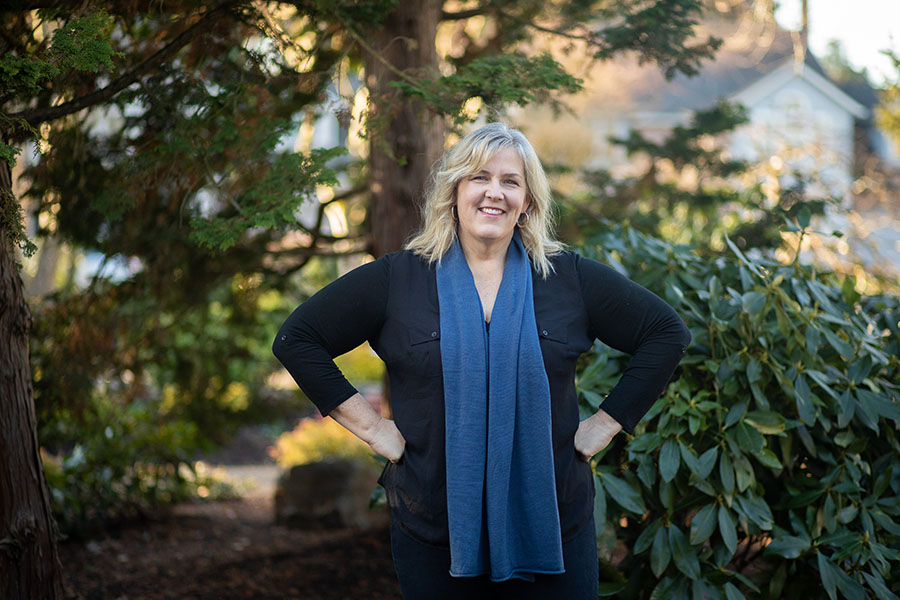 Paige Campbell, president of Grady Britton Photo: Jason E. Kaplan
Paige Campbell, president of Grady Britton Photo: Jason E. Kaplan
“When this pandemic started, you actually saw a lot of leadership coming from brands. People got noticed who were saying ‘We’re still here, and we’re still going to get you what you need,’” says Paige Campbell, president of Portland advertising agency Grady Britton.
“The first thing we had to do for our clients was think, ‘What are our clients saying, and is that relevant and purposeful in society right now?’ We had to support them in evolving their messaging, staying true to their values but also asking ‘How can we help?’”
One such creative pivot came during an online spot for First Interstate Bank. When the pandemic struck, the creative team scrapped the original concept and instead had the director of the ad shoot a new handwashing commercial inside his own house. He used his family for the cast because of quarantine restrictions.
The 30-second ad does not talk about banking at all. Instead, the ad was part of a new strategy of showing leadership — and by doing so, offering comfort and assurance to consumers that the bank is there to help.
“You see a bank during a pandemic and you think, ‘Oh, a bank,’ ‘Oh, no, my mortgage,’ but they help people run small businesses. They stand up for the backbone of our economy, and First Interstate has a huge footprint in a lot of small rural areas,” says Campbell.
According to Mimi Lettunich, president of Portland creative agency Twenty Four 7, increased screen time has made consumers more willing to watch ads all the way through. Longer advertisements fly in the face of traditional advertising dogma. More time with consumers means agencies can become more creative about a potential customer’s experience.
“We are used to delivering messages fast. We don’t talk about having minutes with people, we talk about having seconds with them,” says Lettunich. “We’re amidst a huge opportunity to influence hearts and minds, because people have the time to really get to know you. It’s time for us to rethink what’s possible.”
The increased amount of time with consumers does not automatically mean longer ads. To promote Warner Brothers’ Wonder Woman 1984, which was released both online and in theaters, Twenty Four 7 created a series of interactive user experiences that viewers could access from their phones.
Visitors had the option of getting their picture taken with Wonder Woman’s golden helmet superimposed on their faces, or they could put the superhero into one of their selfies.
When the Black Lives Matter demonstrations swept across the country, brand leadership came into even sharper focus. With a blisteringly divided political climate, brands large and small took a stance on political issues. Nike’s “Don’t Do It” campaign, for example, encouraged people and brands to evaluate their own racial biases.
“When George Floyd was killed, it ushered in a much-needed new era of self-reflection,” says York. “This is not a moment; this is not something that’s going to dissipate with the news cycle. We want BLM to be everlasting, and it will be at Thesis.”
A February study from Russell Reynolds Associates found more than half of consumer-led businesses were in at least the early stages of implementing a diversity, equity and inclusion program.
According to small-business advocacy organization SCORE, 12% of Generation Z consumers said they were more likely to shop at brands with official support of the Black Lives Matter movement, and 21% said they were more likely to support black-owned businesses. Generation Z and millennials are twice as willing to spend more money at companies with inclusion practices.
Every marketing agency interviewed for this article had diversity and inclusion work in place before the pandemic began. But inclusivity has become even more important for marketing agencies, as brands often expect similar levels of DEI commitment from their advertising partners.
Not only does brand leadership on societal issues distinguish them from the competition, it also earns attention from news outlets. Due to the success of brands in shaping and being a part of national dialogue, Thesis CEO Ryan Buchanan says brand leadership is here to stay and agencies stuck in the past will face consequences.
“The year 2020 was a year of change in marketing. People want to align themselves with like-minded brands that stand for something,” says Buchanan. “This year will undoubtedly be a shake-up year for the agency-brand relationship. Agencies that failed to rise to the occasion in supporting their partners with appropriately responding to the roller coaster of 2020 will be on the chopping block.”
Another area that brands have shown more interest in is environmental sustainability. Consumers’ desire for companies to show environmental leadership is high. A study from multinational consulting firm Accenture found 82% of consumers make more environmentally sustainable buying choices because of COVID-19.
But marketing sustainability has proven to be a more difficult nut to crack. With terms like “organic” and “sustainable” being thrown around by many brands, it becomes increasingly important for environmentally friendly brands to distinguish themselves from the competition.
“We call it the ocean of sameness,” says Campbell.
Grady Britton represents Forward Greens, an indoor vertical farm, which competes with brands that claim, sometimes untruthfully, to have environmentally sustainable practices. To better design its messaging, the company tried to move away from using labels and buzzwords.
It created content focusing on the larger goals of the farm and educating consumers about the verticalfarming movement. These goals include feeding the hungry across the world with fresh produce and using less water than conventional farms.
“Not only can Forward Greens claim to use organic and sustainable practices, they are also standing for a bigger idea,” says Campbell. “Yes, this is a sustainable organization, but there’s also a bigger reason why this brand exists. It’s our job as advertisers to enlighten people and to bring that story forward.”
As brands continue their role in social leadership, consumers have begun to expect it. Agencies have had to contend with an increasingly volatile news cycle. With stories of the pandemic, social upheaval, elections and natural disasters just a click away, agencies have had to become nimble at helping clients respond to events in real time both on social media platforms and with online advertisements.
“The year 2020 has been massive crisis on top of massive crisis. It’s ushered in a new era of marketing,” says Buchanan. “Marketing has come to a place where you have to manage crisis well.’”
Thankfully for brands, the increased time users spend online has made it easier to locate and reach consumers who share their values.
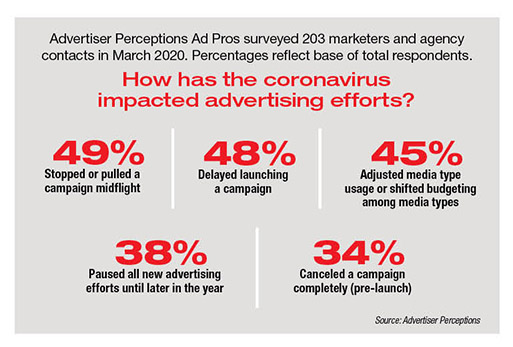 Social media and video platforms have been able to collect larger amounts of consumer data because of the increased time users spend online. Instead of grouping consumers based on age, income and gender, advertising platforms engage in “hyper-targeting.” Increasingly, potential consumers are put into “affinity” groups based on categories like ethical buying practices to gauge their preferences more accurately.
Social media and video platforms have been able to collect larger amounts of consumer data because of the increased time users spend online. Instead of grouping consumers based on age, income and gender, advertising platforms engage in “hyper-targeting.” Increasingly, potential consumers are put into “affinity” groups based on categories like ethical buying practices to gauge their preferences more accurately.
“With advancements in targeting, you can figure out exactly who you’re speaking to, not just age and marital status,” says Buchanan. “Messaging and tone are really important right now.”
The process is known as collecting “psychographic” data. It means consumers are increasingly targeted based on values and perceived personality traits, rather than making guesses based on demographics.
This results in creative content focused increasingly on storytelling and involves content with heightened emotional impact.
“It’s more interesting as a brand to get to tap into those big emotions and big vision of how to make the world a better place rather than engage people tactically by making a very specific claim. We respond a lot better to emotion,” says Campbell. “We’re humans. That’s just what we do.”
One question remains: How much will consumer habits go back to normal after COVID-19 has subsided?
The pandemic is increasing in severity, even with the rollout of vaccines underway. It may be a long time before consumers see advertising in places other than on their phones or computers. Consumer buying habits are likely to remain heavily influenced by online advertising.
Not only is ad targeting more sophisticated online, purchasing habits developed during the pandemic may prove to be permanent.
To subscribe to Oregon Business, click here.

